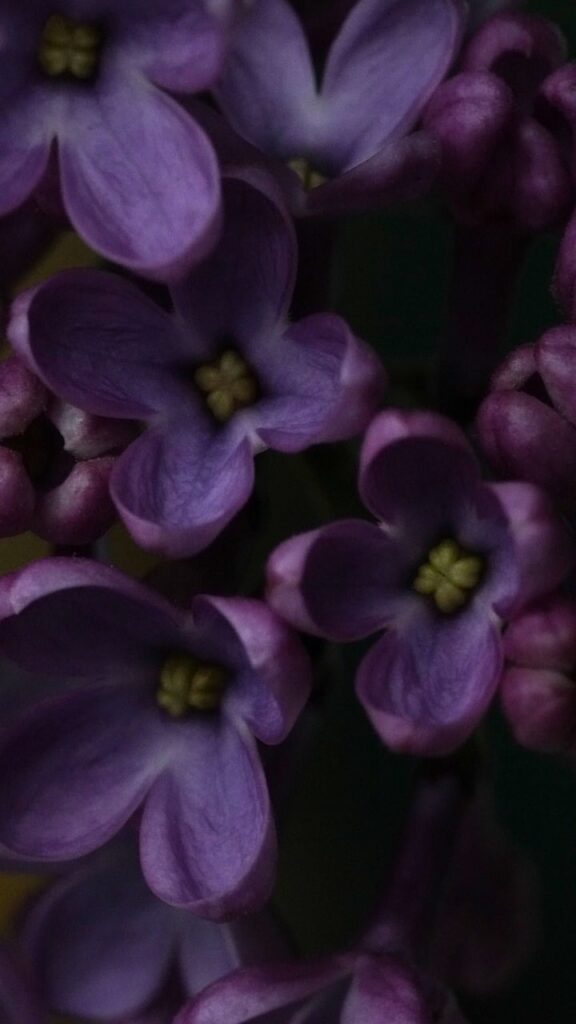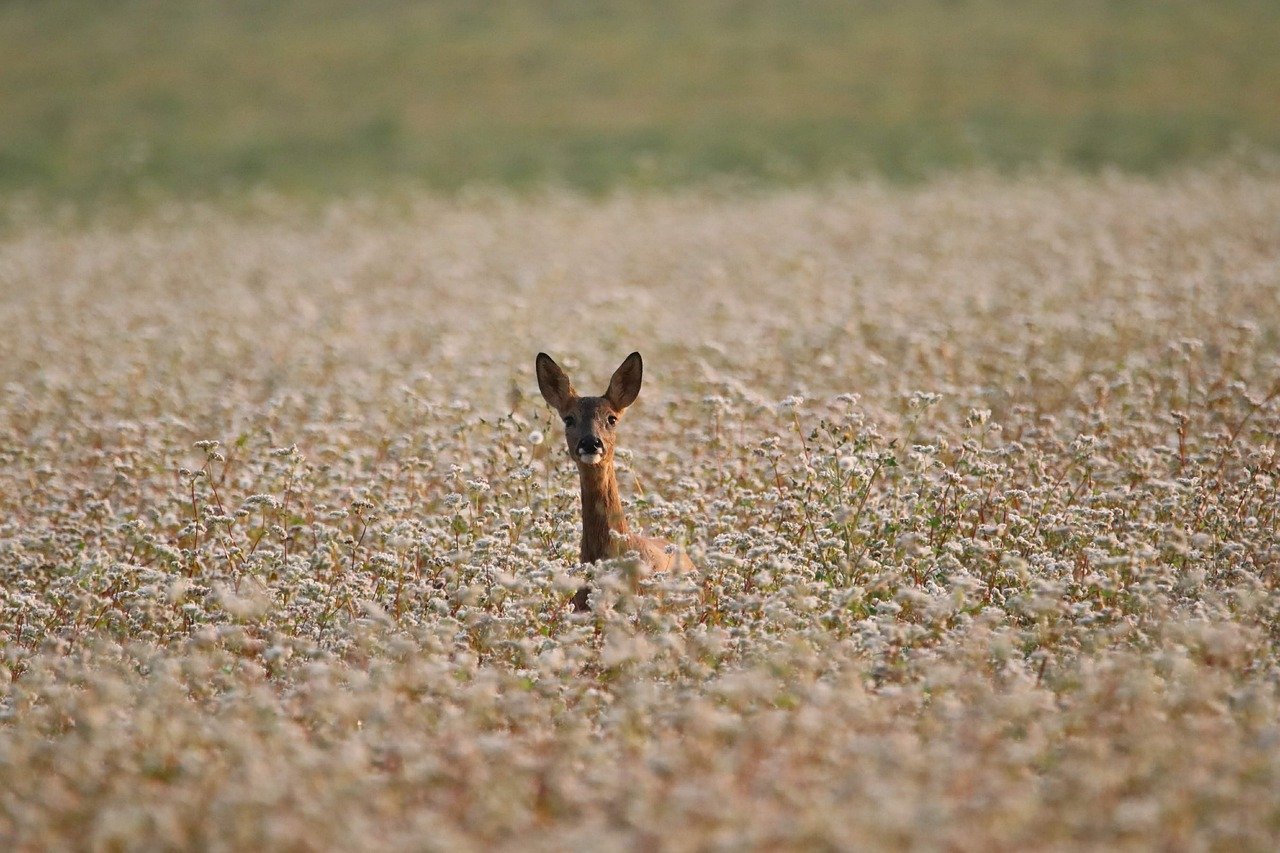Biodiversity plays a crucial role in the web of life on Earth, affecting everything from the air we breathe to the food we eat. In this article, we will explore the fascinating connection between biodiversity and ecosystem services. By understanding how the variety of species in an ecosystem contributes to the services it provides, we can appreciate the importance of preserving and protecting biodiversity for the well-being of our planet and ourselves.

Pollination
Ensuring plant reproduction
Pollination plays a crucial role in ensuring the reproduction and survival of plants. Through the transfer of pollen from the male reproductive organs (stamens) to the female reproductive organs (pistils), pollination enables the fertilization of plants, leading to the production of seeds and fruits. This process is essential for the continued success and diversity of plant species. Without pollinators, such as bees, butterflies, birds, and bats, many plants would struggle to reproduce, leading to a decline in their populations.
Increase in crop yields
Pollination by animals significantly contributes to increased crop yields. Many agricultural crops, including fruits, vegetables, and nuts, rely on pollinators for successful reproduction. When bees and other pollinators visit flowers to feed on nectar or collect pollen, they inadvertently transfer pollen between flowers, facilitating fertilization. This increases the chances of fruit and seed production, resulting in higher crop yields. Studies have shown that pollinator-dependent crops, such as almonds and various fruits, experience a dramatic increase in productivity when there is a healthy and diverse population of pollinators.
Diversity in pollinators
Maintaining a diverse population of pollinators is crucial for effective and reliable pollination. Different pollinators have unique preferences for certain flower shapes, sizes, and colors. By having a variety of pollinators present in an ecosystem, a greater number of plant species can be effectively pollinated. This diversity not only ensures the reproduction of a wide range of plants but also provides resilience to environmental changes. For example, if one pollinator species declines due to climate change or disease, other species can step in and continue the essential role of pollination.
Climate regulation
Carbon sequestration
Biodiversity contributes to climate regulation through the process of carbon sequestration. Plants, including trees, absorb carbon dioxide from the atmosphere through photosynthesis, converting it into organic matter and releasing oxygen. This process helps reduce the concentration of greenhouse gases in the atmosphere, mitigating climate change. Additionally, forests, wetlands, and other biodiverse ecosystems store significant amounts of carbon in their soil and vegetation, acting as carbon sinks.
Mitigating climate change
Biodiverse ecosystems play a crucial role in mitigating climate change by reducing greenhouse gas emissions. Wetlands, for example, are known for their ability to trap and store carbon, preventing it from being released into the atmosphere. Additionally, forests can act as natural carbon sinks, absorbing and storing carbon dioxide. Preserving and restoring these ecosystems is vital in maintaining their role in mitigating climate change.
Temperature regulation
Biodiversity also contributes to temperature regulation by providing shade, cooling effects, and influencing local climate patterns. Forests, for instance, can create a cooling microclimate by providing shade and evapotranspiration. The transpiration process of plants releases moisture into the air, which can lead to the formation of clouds and subsequent rainfall, thus cooling the surrounding area. Additionally, healthy ecosystems with a diverse range of vegetation can help mitigate the urban heat island effect and reduce heat stress in urban areas.

Water purification
Filtering pollutants
Biodiversity plays a crucial role in water purification by filtering pollutants and improving water quality. Wetlands and marshes act as natural filters, trapping and removing pollutants, sediments, and excess nutrients from water bodies. The roots of plants in these ecosystems help stabilize the soil, preventing erosion and the subsequent contamination of water bodies. Furthermore, aquatic organisms, such as freshwater mussels, filter and cleanse the water as they feed, enhancing the overall quality of aquatic ecosystems.
Preventing waterborne diseases
The presence of biodiversity in aquatic ecosystems is essential in preventing waterborne diseases. By maintaining a healthy population of organisms, such as insects and fish, these ecosystems can control the abundance of disease vectors, such as mosquitoes and snails. Additionally, some species of aquatic plants have antimicrobial properties that can help inhibit the growth of harmful bacteria, further reducing the risk of waterborne diseases.
Maintaining water quality
Biodiversity contributes to the maintenance of water quality by promoting the natural balance of nutrient cycles. Various aquatic organisms, including algae and bacteria, engage in nutrient cycling processes, helping to regulate nutrient levels in water bodies. These processes promote the health of ecosystems by preventing excessive algal growth, known as eutrophication, and maintaining the overall balance of nutrients necessary for aquatic life.
Soil fertility
Nutrient cycling
Biodiversity plays a critical role in nutrient cycling, facilitating the movement of nutrients through ecosystems. Decomposers, such as fungi and bacteria, break down organic matter and recycle nutrients back into the soil. In turn, these nutrients are absorbed by plants, contributing to their growth and overall health. Without the diverse array of decomposers and nutrient recyclers, soils would become depleted of essential nutrients, hindering agricultural productivity and ecosystem functioning.
Enhancing agricultural productivity
Maintaining biodiversity is essential for enhancing agricultural productivity. Biodiverse ecosystems, such as forests and grasslands, provide habitat for beneficial organisms, including pollinators and natural enemies of pests. These organisms contribute to natural pest control, reducing crop losses without the need for excessive pesticide use. Additionally, diverse plant species within agricultural landscapes can improve soil health, nutrient availability, and water retention, leading to increased crop yields and overall agricultural sustainability.
Preventing soil erosion
Biodiversity plays a crucial role in preventing soil erosion, protecting agricultural lands and natural habitats. The roots of diverse plant species help bind and stabilize the soil, reducing the risk of erosion caused by wind and water. Additionally, the presence of vegetation acts as a physical barrier, protecting the soil surface from the impact of raindrops and slowing down water flow, preventing runoff. This ecosystem service helps maintain the integrity and fertility of soils, preventing the loss of valuable topsoil and vital nutrients.

Pest and disease control
Natural pest control
Biodiversity promotes natural pest control by maintaining a balance between pests and their natural enemies. Many organisms, including birds, bats, frogs, and insects, feed on pests or act as parasitoids, reducing pest populations naturally. By preserving and enhancing biodiversity, farmers can reduce their reliance on synthetic pesticides and promote more sustainable agriculture practices. This approach not only reduces the impact on human health and the environment but also helps to maintain the effectiveness of natural pest control mechanisms in the long term.
Reducing crop losses
The presence of diverse ecosystems and species can help reduce crop losses caused by pests and diseases. By maintaining a healthy and diverse population of organisms, agricultural landscapes can support the natural enemies of pests, helping to keep their populations in check. For instance, ladybugs, lacewings, and parasitic wasps are effective predators of many agricultural pests, contributing to crop protection. Additionally, diverse plant communities can enhance the resilience of crops to diseases, as certain plant species may have natural resistance or immune system-boosting properties.
Improving human health
Biodiversity contributes to human health by reducing the prevalence of pests and the associated risk of diseases. By promoting natural pest control mechanisms, biodiversity helps to minimize the need for pesticide use, reducing the potential exposure of humans to toxic chemicals. Additionally, the presence of biodiverse landscapes can promote mental well-being and physical activity, providing opportunities for recreational activities and connecting people with nature. This interaction with nature has been shown to have positive impacts on stress reduction and overall health.
Food security
Diverse food sources
Biodiversity is crucial for food security as it provides a diverse range of food sources. Wild plant species, including fruits, nuts, and tubers, contribute to the traditional diets of many indigenous communities and provide an alternative or additional food source in times of scarcity. Additionally, maintaining diverse agricultural systems that incorporate multiple crop species and varieties can help ensure a more resilient and sustainable food supply. By diversifying food sources, we can reduce the vulnerability of our food systems to climate change, pests, and diseases.
Genetic resources for crop improvement
Biodiversity serves as a valuable source of genetic diversity for crop improvement. In the face of changing environmental conditions, pests, and diseases, genetic diversity within crop species is essential for developing new varieties that are resistant to stresses and have improved traits. Wild relatives of cultivated plants often possess desirable traits, such as disease resistance or tolerance to extreme weather conditions, which can be introduced into cultivated varieties through breeding programs. Preserving biodiversity ensures that we have access to these genetic resources for future crop improvement efforts.
Resilience to climate change
Biodiversity contributes to the resilience of food systems to climate change by providing options for adaptation. Through preserving genetic diversity, we can identify and cultivate crop varieties that are better suited to changing climates. By diversifying agricultural systems and incorporating a variety of crop species and varieties, we can reduce the risk of total crop failure in the face of extreme weather events or changing environmental conditions. This diversity also provides farmers with options to adapt their practices and reduce their dependence on inputs such as pesticides or synthetic fertilizers, promoting more sustainable and resilient agricultural systems.
Medicinal resources
Discovery of new drugs
Biodiversity plays a crucial role in the discovery and development of new drugs and medicines. Many plant and animal species possess bioactive compounds with medicinal properties. Traditional medicine systems, such as Ayurveda and Traditional Chinese Medicine, have long relied on biodiversity to provide remedies for various ailments. By studying and harnessing the chemical compounds found in different organisms, scientists can develop new drugs and treatments for diseases, expanding our pharmacological toolkit and improving human health.
Traditional medicine
Biodiversity contributes to traditional medicine practices around the world, providing remedies and treatments for various ailments. Indigenous communities have traditionally relied on the vast array of plant and animal species in their local ecosystems to address their healthcare needs. Traditional medicine often incorporates holistic approaches that take into account the interconnectedness of human health and the natural environment. Preserving biodiversity is crucial to ensure the continued availability of these traditional medicinal resources and to respect the cultural heritage and knowledge of indigenous communities.
Treating diseases
Biodiversity holds immense potential for the development of treatments for diseases. Many species, including plants, animals, and microorganisms, possess compounds that exhibit antibacterial, antiviral, and anticancer properties. By studying and understanding the biological mechanisms behind these compounds, scientists can develop effective treatments for various diseases. Additionally, biodiversity can provide alternative treatment options for antibiotic-resistant infections, as some organisms produce compounds that can overcome resistance mechanisms. Preserving biodiversity ensures that we have access to these natural resources for future medical advancements.
Recreation and cultural values
Tourism and ecotourism
Biodiversity contributes to the recreation industry by attracting tourists and outdoor enthusiasts. Natural areas, such as national parks, wildlife reserves, and protected areas, offer opportunities for recreational activities, such as hiking, birdwatching, and wildlife photography. These activities not only provide an enjoyable and educational experience for visitors but also contribute to local economies through tourism revenue. Ecotourism, in particular, promotes responsible travel and sustainable practices, fostering a deeper appreciation for biodiversity and encouraging the conservation of natural areas.
Aesthetic and spiritual benefits
Biodiversity provides aesthetic and spiritual benefits to individuals and communities. From the vibrant colors of blooming flowers to the graceful flight of birds, the beauty of nature has a positive impact on our well-being. Connecting with nature and experiencing biodiversity can evoke a sense of wonder, tranquility, and inspiration. Additionally, many cultures and indigenous communities have deep spiritual connections to the natural world, perceiving plants, animals, and landscapes as sacred entities. Preserving biodiversity is fundamental to maintaining these aesthetic and spiritual values, enriching our lives and cultural heritage.
Preserving cultural heritage
Biodiversity is closely intertwined with cultural heritage, reflecting the traditions, knowledge, and practices of different communities. Many indigenous cultures have a deep relationship with their local ecosystems, relying on biodiversity for sustenance, spirituality, and traditional practices. Traditional ecological knowledge, passed down through generations, encompasses valuable insights into the uses of plants, conservation practices, and sustainable resource management. By honoring and preserving biodiversity, we also preserve the cultural heritage and identity of these communities, fostering cultural diversity and mutual respect.
Flood control
Absorbing excess water
Biodiverse ecosystems, such as wetlands and forests, play a crucial role in flood control by absorbing excess water during heavy rainfall events. Wetlands act as natural sponges, with the capacity to hold and retain large amounts of water. The dense vegetation in forests helps intercept and slow down rainwater, allowing it to penetrate into the ground and reducing surface runoff. By absorbing excess water, biodiverse ecosystems help regulate water levels and prevent flooding in downstream areas, protecting both human settlements and valuable infrastructure.
Reducing flood risk
The presence of healthy and diverse ecosystems can reduce the risk of flooding in communities located near water bodies. Riparian forests, which occur along riverbanks, stabilize the soil and prevent erosion, reducing the likelihood of riverbank collapse during flood events. Additionally, wetlands act as natural buffers, dampening the speed and volume of floodwater as it enters these ecosystems. This reduces the force of the floodwaters downstream and decreases the likelihood of catastrophic flooding. Conserving and restoring these biodiverse habitats is crucial in minimizing flood risks and protecting vulnerable communities.
Protecting infrastructure
Biodiversity contributes to the protection of infrastructure from flood damage. Ecosystems, such as coral reefs and mangrove forests, act as natural barriers, absorbing the energy of waves and storm surges generated by tropical storms and hurricanes. By dissipating wave energy and reducing the force of coastal erosion, these ecosystems protect coastal settlements, roads, and buildings from damage. Mangrove forests, in particular, are highly effective in reducing the impact of tidal waves and storm surges, making them valuable in protecting vulnerable coastal areas from the effects of climate change and extreme weather events.
Climate resilience
Adaptation to changing conditions
Biodiversity plays a crucial role in enhancing the resilience of ecosystems and communities to changing environmental conditions. The presence of diverse species within an ecosystem increases its capacity to adapt and respond to fluctuating climates. Each species has unique traits and tolerances, allowing them to thrive under specific climate conditions. By preserving biodiversity, we preserve a genetic reservoir that can lead to the adaptation and survival of ecosystems in the face of climate change. This genetic flexibility allows ecosystems to maintain their services and functions while facing changing climatic conditions.
Ecosystem stability
Biodiverse ecosystems exhibit greater stability and resistance to disturbances, making them more resilient to climate change impacts. The intricate and complex web of interactions among species provides functional redundancy and buffering capacity. If one species declines or disappears due to changing conditions, others can compensate and maintain essential ecosystem functions. This stability helps ensure the provision of ecosystem services, such as food production, water purification, and climate regulation, even in the face of environmental stressors. Maintaining biodiversity is vital in building ecosystems that can withstand and recover from disturbances.
Buffering against extreme events
Biodiversity plays a critical role in buffering ecosystems against the impacts of extreme weather events. Healthy and diverse ecosystems, such as mangrove forests and coral reefs, provide natural defenses that can absorb and dissipate the energy of storms, protecting coastal areas from the destructive forces of storm surges, waves, and erosion. Additionally, biodiverse landscapes with a variety of plant species can mitigate the impacts of droughts and wildfires by conserving soil moisture, reducing the risk of soil erosion, and enabling the recovery of vegetation after disturbances. Preserving biodiversity helps build resilience against extreme events and their associated risks.
In conclusion, biodiversity plays a fundamental role in providing a wide range of ecosystem services that are essential for the well-being of humans and the sustainability of the planet. From ensuring plant reproduction through pollination to regulating the climate and purifying water, the diverse array of species and habitats contribute to the functioning and resilience of ecosystems. Biodiversity also provides cultural, medicinal, and recreational benefits, enhancing our quality of life and connecting us with the natural world. Recognizing the value and importance of biodiversity is crucial in promoting sustainable development, conservation efforts, and the preservation of our planet for future generations.




